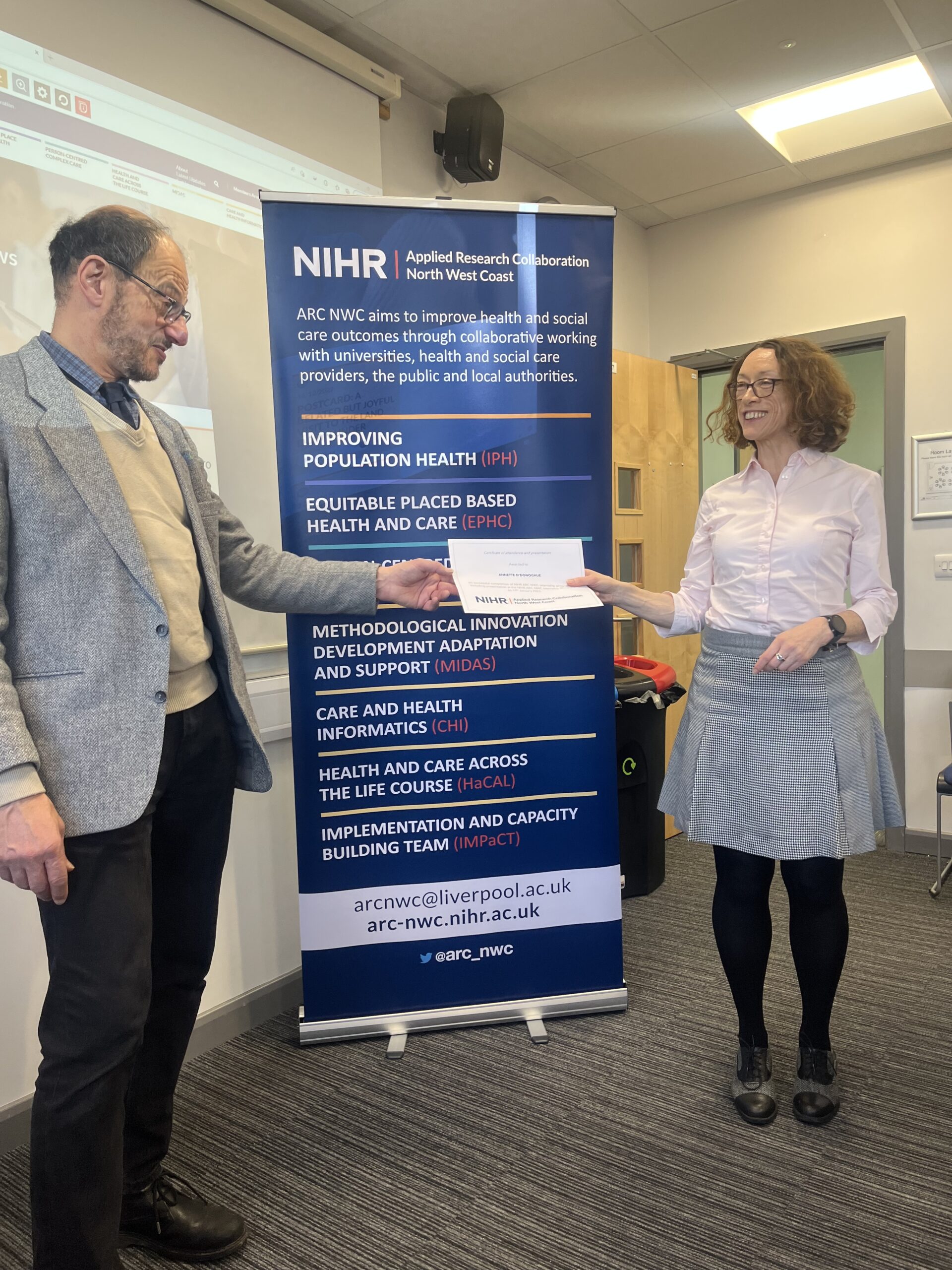Exploring the “Discharge to Assess” (D2A) model – pathway 1: Patient, carer, and staff perspectives
Annette O'Donoghue - Occupational Therapist, University Hospitals of Morecambe Bay NHS Foundation Trust

Research Internship with the Health and Care across the Lifecourse (HaCaL) theme
Background: When a patient in hospital no longer meets the “Criteria to Reside”, they must, when clinically safe, be discharged as soon as possible. “Discharge to Assess” (D2A) is the default option for every patient who requires their care needs to be assessed. The aim is to support patients so that they can be safely discharged, with rapid assessments and quick access, if needed, to care and support. D2A is defined as “where people who are clinically optimised and do not require an acute bed, but may still require care, services are provided with short-term, funded support to be discharged to their own home (where appropriate) or another community setting”. Several terms are used for what is often referred to as D2A, for example “home first”, “safely home”, and “step down”. There has been little exploration of patient experiences of the D2A model, this research will focus on exploring patient experiences of the pathway 1 service (being discharged from hospital with support to recover at home).
Research aims and objectives: To gain an understanding of the patient’s experiences and views of being discharged from hospital with support to recover at home (pathway 1 in the D2A model);
• to explore aspects of the D2A pathway 1 service that patients perceive as valuable,
• to highlight any possible areas of improvement to the service, according to patients,
• to identify similarities and differences between reported patient experiences, between the three sites within the Trust,
• to reflect upon any differences identified and consider potential reasons for the differences.
Methods: Qualitative semi-structured interviews with 5 patients discharged from each of the three sites of the Trust. Interviews will be conducted over the telephone or by video call.
Patient and public involvement: Public advisors and staff were involved at the research design stage, and in the development and phrasing of the Patient Information Sheet (PIS), the consent form, consent to contact form, and the interview guide.
Links:
• ARC NWC Internship Showcase Poster
For more information, contact annette.odonoghue@mbht.nhs.uk